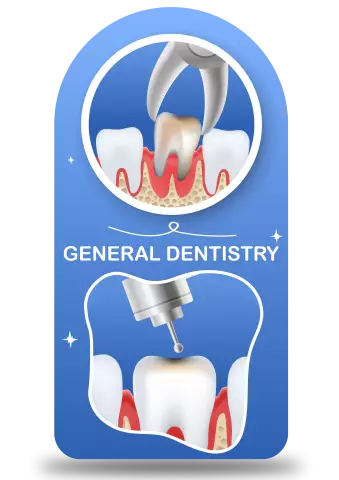- Author Rachel Wainwright [email protected].
- Public 2023-12-15 07:39.
- Last modified 2025-11-02 20:14.
Nitrous oxide
Nitrogen nitrous oxide: instructions for use and reviews
- 1. Release form and composition
- 2. Pharmacological properties
- 3. Indications for use
- 4. Contraindications
- 5. Method of application and dosage
- 6. Side effects
- 7. Overdose
- 8. Special instructions
- 9. Application during pregnancy and lactation
- 10. Use in childhood
- 11. Drug interactions
- 12. Analogs
- 13. Terms and conditions of storage
- 14. Terms of dispensing from pharmacies
- 15. Reviews
- 16. Price in pharmacies
Latin name: Nitrogenium oxydulatum
ATX code: N01AX13
Active ingredient: dinitrogen oxide (dinitrogen oxide)
Producer: Linde Gas Rus, JSC (Russia), MedGazServis TD (Russia), Stirolbiopharm, LLC (Ukraine)
Description and photo update: 02.06.2018

Nitrogen nitrous oxide is an anesthetic preparation for inhalation anesthesia.
Release form and composition
Dosage form - compressed gas: colorless, may have a weak specific odor, with a non-flammable, but combustion-supporting property (6.2 kg each in metal cylinders with a capacity of 10 liters).
The active substance is dinitrogen oxide, in 1 bottle - 6.2 kg.
Pharmacological properties
Pharmacodynamics
Dinitrogen oxide is a means for inhalation anesthesia. The mechanism of action is due to the ability to nonspecifically interact with the membranes of neurons, inhibit the transmission of nerve impulses in the central nervous system, and change the cortical-subcortical relationship.
It is characterized by high analgesic activity. In low concentrations, it causes slight drowsiness and intoxication.
The stage of analgesia is reached 2-3 minutes after inhalation of a gas mixture containing up to 80% nitrous oxide and 20% oxygen. In 6-8 minutes after a short, but rather pronounced stage of arousal, stage I of surgical anesthesia begins.
To maintain anesthesia, a concentration of 40-50% dinitrogen oxide is sufficient with a corresponding increase in oxygen concentration. At the same time, sufficient relaxation of the skeletal muscles is not achieved. In this regard, to achieve the required effect, nitrous oxide is used in combination with other agents intended for inhalation anesthesia and muscle relaxants.
Awakening occurs 3-5 minutes after the cessation of the inhalation gas mixture supply.
Nitrogen nitrous oxide inhibits respiration, causes constriction of peripheral vessels, increases heart rate, and can increase intracranial pressure.
Pharmacokinetics
Through the lungs, nitrous oxide enters the systemic circulation. In plasma, it is in a dissolved state, not metabolized. It is excreted mainly through the lungs unchanged (after 10-15 minutes), in small quantities through the skin.
The half-life is 5-6 minutes.
It penetrates well through the blood-brain and placental barriers.
Indications for use
According to the instructions for use, Nitrogen nitrous oxide is used in the following cases:
- Inhalation combined anesthesia in combination with narcotic analgesics and muscle relaxants, carried out using special equipment;
- General anesthesia in operative gynecology, general surgery, dentistry and for pain relief during labor, which does not require muscle relaxation and deep anesthesia;
- Prevention of traumatic shock, as well as to enhance the analgesic and anesthetic effects of other drugs, including therapeutic analgesic anesthesia after surgery;
- Pain relief in acute pancreatitis, myocardial infarction, acute coronary insufficiency;
- Disabling consciousness for pain relief during medical procedures.
Contraindications
- Nervous system pathologies;
- Hypoxia;
- Chronic alcoholism or alcohol intoxication;
- Breastfeeding period;
- Hypersensitivity to the drug.
The drug is used with caution in patients with traumatic brain injury, intracranial tumor, increased intracranial pressure in history.
If necessary, use during pregnancy, the drug is prescribed in small concentrations (in a ratio of 1: 1 to oxygen) for a short time (within 2-3 breaths).
Nitrogen nitrous oxide, instructions for use: method and dosage
Nitrous oxide is used in the form of inhalation in combination with oxygen and other anesthetics using special equipment for gas anesthesia in stationary conditions.
Usually, anesthesia is started with a mixture containing 70-80% dinitrogen oxide and 20-30% oxygen.
Recommended concentration of dinitrogen oxide:
- Therapeutic anesthesia for relief and prevention of pain syndrome: 40-75%;
- General anesthesia: dose for a quick immersion to the required depth of anesthesia - 70-75%, maintenance dose - 40-50%. If necessary, powerful narcotic drugs can be added to the mixture, including fluorothane, barbiturates, ether. After turning off the supply of dinitrogen oxide, it is recommended to continue the oxygen supply for another 4-5 minutes, in order to prevent diffusion hypoxia;
- Pain relief of labor: 40-75%, using the method of intermittent autoanalgesia, in which the inhalation of the mixture by the woman in labor begins when the precursors of the contraction appear and stops at its peak or at the end of the contraction;
- Switching off consciousness for performing medical procedures: 25-50%.
The concentration of nitrous oxide for children is selected individually, while the oxygen content in the mixture should be 30% or more. After completion of anesthesia, it is necessary to continue the inhalation supply of oxygen for 5 minutes to prevent hypoxia.
Inhalation anesthesia is performed with premedication. In order to prevent nausea and vomiting, to reduce emotional arousal and enhance the action, intramuscular administration of 2-3 ml of 0.25% droperidol solution (5-7.5 mg), 1-2 ml of 0.5% diazepam solution (5-10 mg).
Side effects
The use of nitrous oxide can cause side effects in the form of bradycardia, supraventricular arrhythmias, circulatory failure - during the period when the patient is placed under general anesthesia.
Undesirable effects after recovery from anesthesia can be: drowsiness, nausea, vomiting, diffuse hypoxia, confusion, anxiety, agitation, nervousness, hallucinations, motor excitement. Prolonged use (2 or more days) can lead to respiratory depression, dysfunction of the bone marrow (leukopenia, pancytopenia), cause postoperative chills and hyperthermic crisis.
Overdose
An overdose of nitrous oxide can be manifested by the following symptoms: respiratory depression, acute hypoxia, decreased blood pressure, arrhythmia, bradycardia, delirium.
Treatment:
- bradycardia: administration of atropine at a dose of 0.3-0.6 mg;
- arrhythmia: correction of blood gases;
- circulatory failure, arterial hypotension: a decrease in depth or cessation of general anesthesia, the introduction of plasma or plasma substitutes;
- hypertensive crisis: cessation of inhalation, increased oxygen supply, correction of metabolic acidosis and water-salt balance disorders, administration of antipyretics. If necessary, dantrolene is injected intravenously at a dose of 1 mg / kg (the total dose should not exceed 10 mg / kg) until the symptoms of the crisis are stopped. In order to avoid recurrence of the crisis within 1-3 days after the operation, dantrolene is used (orally or intravenously at a daily dose of 4-8 mg / kg in 4 divided doses);
- respiratory depression or inadequate postoperative ventilation of the lungs: reducing the dose of anesthetic (if it is still used), ensuring airway patency or artificial ventilation;
- delirium after recovery from general anesthesia: the introduction of a narcotic analgesic in small doses.
special instructions
The use of the drug must be accompanied by monitoring of blood pressure, heart rate (HR), heart rate, and also to monitor the state of gas exchange and respiration, the patient's body temperature. During anesthesia, it is recommended to periodically evacuate gas from the endotracheal tube cuff.
The use of nitrous oxide is indicated in the treatment of infants and older children. Do not prescribe the drug to newborns.
Prolonged exposure to the drug in medical personnel increases the risk of developing leukopenia.
Certain concentrations of a mixture with cyclopropane, ether, chloroethyl are explosive.
For patients with chronic alcoholism, the appointment of high concentrations of dinitrogen oxide is required.
Influence on the ability to drive vehicles and complex mechanisms
The drug is not used when driving vehicles and mechanisms.
Application during pregnancy and lactation
During pregnancy, nitrous oxide can be used exclusively for pain relief during labor, only in low concentrations (in a 1: 1 ratio with oxygen) and for a short time (2 or 3 breaths), since prolonged use of anesthesia with dinitrogen oxide can negatively affect the development of the child and provoke a miscarriage.
During lactation, the remedy is contraindicated, therefore, breastfeeding should be canceled if anesthesia with Nitrogen oxide is required.
Pediatric use
Perhaps the appointment of nitrous oxide to children. The dose for each child is selected individually, but the oxygen content in the gas mixture must be at least 30%.
Drug interactions
With the simultaneous use of nitrous oxide:
- Amiodarone - increases the likelihood of arterial hypotension and bradycardia not stopped by atropine;
- Fentanyl and its derivatives - enhance the effect on the cardiovascular system, reduce the minute volume of the heart and heart rate;
- Xanthines - increase the risk of arrhythmias;
- Tranquilizers, means for inhalation anesthesia, antipsychotics, narcotic analgesics, antihistamines - enhance the effect.
When combined, the drug enhances the effects of diazoxide, ganglion blockers, diuretics, coumarin and indandione derivatives, agents that depress the nervous system and respiration.
Analogs
Nitrous oxide analogs are: Stickoxidal, Dinitrogen Oxide.
Terms and conditions of storage
Store at temperatures up to 25 ° C. Keep out of the reach of children.
The shelf life is 5 years.
Terms of dispensing from pharmacies
Released only for hospitals.
Reviews of nitrous oxide
Reviews of Nitrogen nitrous oxide as a means for general anesthesia on websites and forums are few: the anesthesia is well tolerated, it does not cause serious side effects.
Most often, there are reports of the use of nitrous oxide in children in dentistry. Parents write that the dentist recommended nitrous oxide as a sedative after the child flatly refused to treat his teeth. In this case, the gas mixture is fed through the nose. Treatment, accompanied by sedation, was successful, the child was conscious, but calmer than usual. Of the side effects, only drowsiness after the procedure is described.
The price of nitrous oxide in pharmacies
The price of Nitrous Oxide is unknown because the product is not available for sale.

Anna Kozlova Medical journalist About the author
Education: Rostov State Medical University, specialty "General Medicine".
Information about the drug is generalized, provided for informational purposes only and does not replace the official instructions. Self-medication is hazardous to health!






